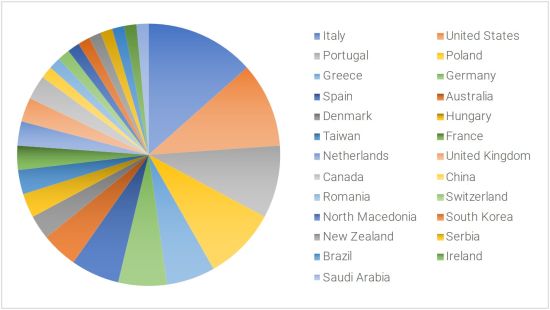Search Articles
Journal:
all
Keyword:
traction and suspension control
Total
—
73 articles
Article 28 December 2023
Majbah Uddin, Nathan N. Huynh and Fahim Ahmed
1475 Views427 Downloads2 Citations
Editorial 21 December 2023
Highlights of Sustainability Editorial Office
Highlights of Sustainability
Volume 2 (2023), Issue 4, pp. 303–304
Volume 2 (2023), Issue 4, pp. 303–304
1277 Views396 Downloads
Article 20 December 2023
Mouna Samaali, El-Hassane Aglzim, Xavier Dessertenne and Patrick Dubreuille
This article is part of the Special Issue Feature Papers to the Inaugural Volume of Highlights of Vehicles.
Highlights of Vehicles
Volume 1 (2023), Issue 2, pp. 68–85
Volume 1 (2023), Issue 2, pp. 68–85
1449 Views553 Downloads
Article 16 November 2023
Mahdi Mahmoudzadeh
This article is part of the Special Issue Capturing the Sustainable Impact of Early-Stage Business Models.
Highlights of Sustainability
Volume 2 (2023), Issue 4, pp. 283–302
Volume 2 (2023), Issue 4, pp. 283–302
1515 Views521 Downloads
Article 15 November 2023
Irina Di Ruocco
This article is part of the Special Issue Capturing the Sustainable Impact of Early-Stage Business Models.
Highlights of Sustainability
Volume 2 (2023), Issue 4, pp. 259–282
Volume 2 (2023), Issue 4, pp. 259–282
1622 Views505 Downloads1 Citations
Article 11 November 2023
Sevasti Malisiova and Stella Kostopoulou
Highlights of Sustainability
Volume 2 (2023), Issue 4, pp. 241–258
Volume 2 (2023), Issue 4, pp. 241–258
1769 Views593 Downloads
Article 2 November 2023
Constanze Trautwein
This article is part of the Special Issue Capturing the Sustainable Impact of Early-Stage Business Models.
Highlights of Sustainability
Volume 2 (2023), Issue 4, pp. 224–240
Volume 2 (2023), Issue 4, pp. 224–240
1764 Views586 Downloads
Article 6 October 2023
Felice Diekel, Vanessa Bach and Matthias Finkbeiner
This article is part of the Special Issue Capturing the Sustainable Impact of Early-Stage Business Models.
Highlights of Sustainability
Volume 2 (2023), Issue 4, pp. 207–223
Volume 2 (2023), Issue 4, pp. 207–223
3244 Views919 Downloads2 Citations
Article 22 September 2023
Carlo Berizzi, Margherita Capotorto, Gaia Nerea Terlicher and Luca Trabattoni
Highlights of Sustainability
Volume 2 (2023), Issue 4, pp. 185–206
Volume 2 (2023), Issue 4, pp. 185–206
2081 Views715 Downloads1 Citations
Case Report 25 August 2023
Maria Richert
Highlights of Vehicles
Volume 1 (2023), Issue 1, pp. 54–67
Volume 1 (2023), Issue 1, pp. 54–67
2398 Views928 Downloads

Volume 3 (2024), Issue 1, pp. 1–15